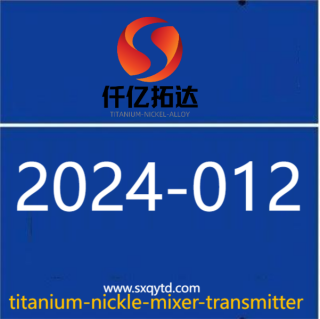Installation and Maintenance Guidelines for Nickel Socket Weld Fittings
[ 信息发布:本站 | 时间:2024-03-14 | 浏览:478 ]
Installation and Maintenance Guidelines for Nickel Socket Weld Fittings

Installation and maintenance guidelines are crucial for ensuring the optimal performance and longevity of nickel socket weld fittings. Here are some key points to consider:
Installation:
-
Preparation: Ensure that the installation area is clean, dry, and free from any debris or contaminants that could compromise the integrity of the fittings.
-
Fitment Inspection: Before installation, inspect the nickel socket weld fittings for any damage, defects, or irregularities. Replace any fittings that do not meet quality standards.
-
Proper Alignment: Ensure that the fittings are properly aligned with the piping system. Misalignment can lead to leaks or stress concentration points, affecting the overall integrity of the system.
-
Welding Procedure: Follow the appropriate welding procedure as per industry standards and guidelines. Use compatible welding materials and techniques to achieve strong and durable weld joints.
-
Avoid Overheating: Take care to avoid overheating the fittings during the welding process, as excessive heat can lead to distortion or metallurgical changes that compromise the fittings' integrity.
-
Post-Weld Inspection: After welding, inspect the weld joints for any signs of defects, such as cracks, porosity, or incomplete penetration. Address any issues promptly to ensure the integrity of the welds.
Maintenance:
-
Regular Inspection: Periodically inspect the nickel socket weld fittings for signs of corrosion, erosion, or mechanical damage. Pay particular attention to areas prone to stress, such as weld joints and connections.
-
Cleaning: Keep the fittings clean and free from debris or contaminants that could promote corrosion or damage. Use appropriate cleaning agents and methods as recommended by the manufacturer.
-
Corrosion Protection: Consider applying corrosion-resistant coatings or treatments to the fittings, especially if they are exposed to corrosive environments or harsh chemicals.
-
Tightening: Check the tightness of bolted connections periodically and tighten them if necessary to prevent leaks or loosening over time.
-
Temperature Monitoring: Monitor the operating temperature of the fittings regularly, especially in high-temperature applications. Ensure that the fittings are rated for the maximum temperature encountered in the system.
-
Repair or Replacement: If any fittings are found to be damaged or compromised during inspection, repair or replace them promptly to prevent further issues or failures.
By following these installation and maintenance guidelines, you can ensure the reliable performance and durability of nickel socket weld fittings in your piping system. Regular inspection, proper maintenance, and timely repairs are essential for maximizing the lifespan of the fittings and maintaining the integrity of the overall system
yShaanxi Qianyi Tuoda Technology Co., Ltd;Email:qy002@sxqytd.com;WhatsApp +8618829679311
